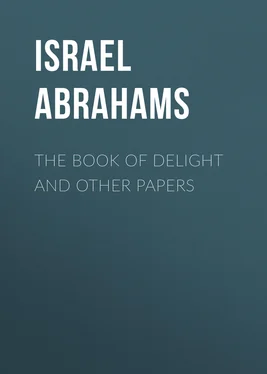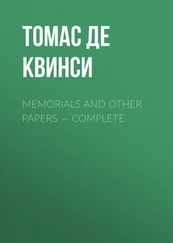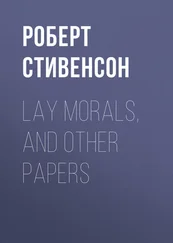Israel Abrahams - The Book of Delight and Other Papers
Здесь есть возможность читать онлайн «Israel Abrahams - The Book of Delight and Other Papers» — ознакомительный отрывок электронной книги совершенно бесплатно, а после прочтения отрывка купить полную версию. В некоторых случаях можно слушать аудио, скачать через торрент в формате fb2 и присутствует краткое содержание. Жанр: foreign_poetry, Поэзия, foreign_antique, foreign_prose, на английском языке. Описание произведения, (предисловие) а так же отзывы посетителей доступны на портале библиотеки ЛибКат.
- Название:The Book of Delight and Other Papers
- Автор:
- Жанр:
- Год:неизвестен
- ISBN:нет данных
- Рейтинг книги:5 / 5. Голосов: 1
-
Избранное:Добавить в избранное
- Отзывы:
-
Ваша оценка:
- 100
- 1
- 2
- 3
- 4
- 5
The Book of Delight and Other Papers: краткое содержание, описание и аннотация
Предлагаем к чтению аннотацию, описание, краткое содержание или предисловие (зависит от того, что написал сам автор книги «The Book of Delight and Other Papers»). Если вы не нашли необходимую информацию о книге — напишите в комментариях, мы постараемся отыскать её.
The Book of Delight and Other Papers — читать онлайн ознакомительный отрывок
Ниже представлен текст книги, разбитый по страницам. Система сохранения места последней прочитанной страницы, позволяет с удобством читать онлайн бесплатно книгу «The Book of Delight and Other Papers», без необходимости каждый раз заново искать на чём Вы остановились. Поставьте закладку, и сможете в любой момент перейти на страницу, на которой закончили чтение.
Интервал:
Закладка:
The Jewish tradition does not quite agree with the view that identified this old tree with Mamre. According to Jewish tradition, the Tree is at the ruins of Ramet el-Khalil, the High Place of the Friend, i.e. of Abraham, about two miles nearer Jerusalem. Mr. Shaw Caldecott has propounded the theory that this site is Samuel's Ramah, and that the vast ruins of a stone-walled enclosure here represent the enclosure within which Samuel's altar stood. The Talmud has it that Abraham erected a guest-house for the entertainment of strangers near the Grove of Mamre. There were doors on every side, so that the traveller found a welcome from whichever direction he came. There our father made the name of God proclaimed at the mouth of all wayfarers. How? After they had eaten and refreshed themselves, they rose to thank him. Abraham answered, "Was the food mine? It is the bounty of the Creator of the Universe." Then they praised, glorified, and blessed Him who spake and the world was.
We are on the road now near Hebron, but, before entering, let us recall a few incidents in its history. After the Patriarchal age, Hebron was noted as the possession of Caleb. It also figures as a priestly city and as one of the cities of refuge. David passed much of his life here, and, after Saul's death, Hebron was the seat of David's rule over Judea. Abner was slain here by Joab, and was buried here—they still show Abner's tomb in the garden of a large house within the city. By the pool at Hebron were slain the murderers of Ishbosheth, and here Absalom assumed the throne. After his time we hear less of Hebron. Jerusalem overshadowed it in importance, yet we have one or two mentions. Rehoboam strengthened the town, and from a stray reference in Nehemiah, we gather that the place long continued to be called by its older name of Kiriath Arba. For a long period after the return from the Exile Hebron belonged to the Idumeans. It was the scene of warfare in the Maccabean period, and also during the rebellion against Rome. In the market-place at Hebron, Hadrian sold numbers of Jewish slaves after the fall of Bar-Cochba, in 135 C.E. In the twelfth century Hebron was in the hands of the Christian Crusaders. The fief of Hebron, or, as it was called, of Saint Abraham, extended southwards to Beer-sheba. A bishopric was founded there in 1169, but was abandoned twenty years later.
We hear of many pilgrims in the Middle Ages. The Christians used to eat some of the red earth of Hebron, the earth from which Adam was made. On Sunday the seventeenth of October, 1165, Maimonides was in Hebron, passing the city on his way from Jerusalem to Cairo. Obadiah of Bertinoro, in 1488, took Hebron on the reverse route. He went from Egypt across the desert to Gaza, and, though he travelled all day, did not reach Hebron from Gaza till the second morning. If the text is correct, David Reubeni was four days in traversing the same road, a distance of about thirty-three miles. To revert to an earlier time, Nachmanides very probably visited Hebron. Indeed, his grave is shown to the visitor. But this report is inaccurate. He wrote to his son, in 1267, from Jerusalem, "Now I intend to go to Hebron, to the sepulchre of our ancestors, to prostrate myself, and there to dig my grave." But he must have altered his mind in the last-named particular, for his tomb is most probably in Acre.
I need not go through the list of distinguished visitors to Hebron. Suffice it to say that in the fourteenth century there was a large and flourishing community of Jews in the town; they were weavers and dyers of cotton stuffs and glass-makers, and the Rabbi was often himself a shepherd in the literal sense, teaching the Torah while at work in the fields. He must have felt embarrassed sometimes between his devotion to his metaphorical and to his literal flock. When I was at Moza, I was talking over some Biblical texts with Mr. David Yellin, who was with me. The colonists endured this for a while, but at last they broke into open complaint. One of the colonists said to me: "It is true that the Mishnah forbids you to turn aside from the Torah to admire a tree, but you have come all the way from Europe to admire my trees. Leave the Torah alone for the present." I felt that he was right, and wondered how the Shepherd Rabbis of Hebron managed in similar circumstances.
In the century of which I am speaking, the Hebron community consisted entirely of Sefardim, and it was not till the sixteenth century that Ashkenazim settled there in large numbers. I have already mentioned the visit of David Reubeni. He was in Hebron in 1523, when he entered the Cave of Machpelah on March tenth, at noon. It is of interest to note that his account of the Cave agrees fully with that of Conder. It is now quite certain that he was really there in person, and his narrative was not made up at second hand. The visit of Reubeni, as well as Sabbatai Zebi's, gave new vogue to the place. When Sabbatai was there, a little before the year 1666, the Jews were awake and up all night, so as not to lose an instant of the sacred intercourse with the Messiah. But the journey to Hebron was not popular till our own days. It was too dangerous, the Hebron natives enjoying a fine reputation for ferocity and brigandage. An anonymous Hebrew writer writes from Jerusalem in 1495, that a few days before a Jew from Hebron had been waylaid and robbed. But he adds: "I hear that on Passover some Jews are coming here from Egypt and Damascus, with the intention of also visiting Hebron. I shall go with them, if I am still alive."
In Baedeker, Hebron is still given a bad character, the Muslims of the place being called fanatical and violent. I cannot confirm this verdict. The children throw stones at you, but they take good care not to hit. As I have already pointed out, Hebron is completely non-Christian, just as Bethlehem is completely non-Mohammedan. The Crescent is very disinclined to admit the Cross into Hebron, the abode of Abraham, a name far more honored by Jews and Mohammedans than by Christians.
It is not quite just to call the Hebronites fanatical and sullen; they really only desire to hold Hebron as their own. "Hebron for the Hebronites" is their cry. The road, at all events, is quite safe. One of the surprises of Palestine is the huge traffic along the main roads. Orientals not only make a great bustle about what they do, but they really are very busy people. Along the roads you meet masses of passengers, people on foot, on mules and horses, on camels, in wheeled vehicles. You come across groups of pilgrims, with one mule to the party, carrying the party's goods, the children always barefooted and bareheaded—the latter fact making you realize how the little boy in the Bible story falling sick in the field exclaimed "My head, my head!" Besides the pilgrims, there are the bearers of goods and produce. You see donkeys carrying large stones for building, one stone over each saddle. If you are as lucky as I was, you may see a runaway camel along the Hebron road, scouring alone at break-neck speed, with laughter-producing gait.
Конец ознакомительного фрагмента.
Текст предоставлен ООО «ЛитРес».
Прочитайте эту книгу целиком, на ЛитРес.
Безопасно оплатить книгу можно банковской картой Visa, MasterCard, Maestro, со счета мобильного телефона, с платежного терминала, в салоне МТС или Связной, через PayPal, WebMoney, Яндекс.Деньги, QIWI Кошелек, бонусными картами или другим удобным Вам способом.
Интервал:
Закладка:
Похожие книги на «The Book of Delight and Other Papers»
Представляем Вашему вниманию похожие книги на «The Book of Delight and Other Papers» списком для выбора. Мы отобрали схожую по названию и смыслу литературу в надежде предоставить читателям больше вариантов отыскать новые, интересные, ещё непрочитанные произведения.
Обсуждение, отзывы о книге «The Book of Delight and Other Papers» и просто собственные мнения читателей. Оставьте ваши комментарии, напишите, что Вы думаете о произведении, его смысле или главных героях. Укажите что конкретно понравилось, а что нет, и почему Вы так считаете.











